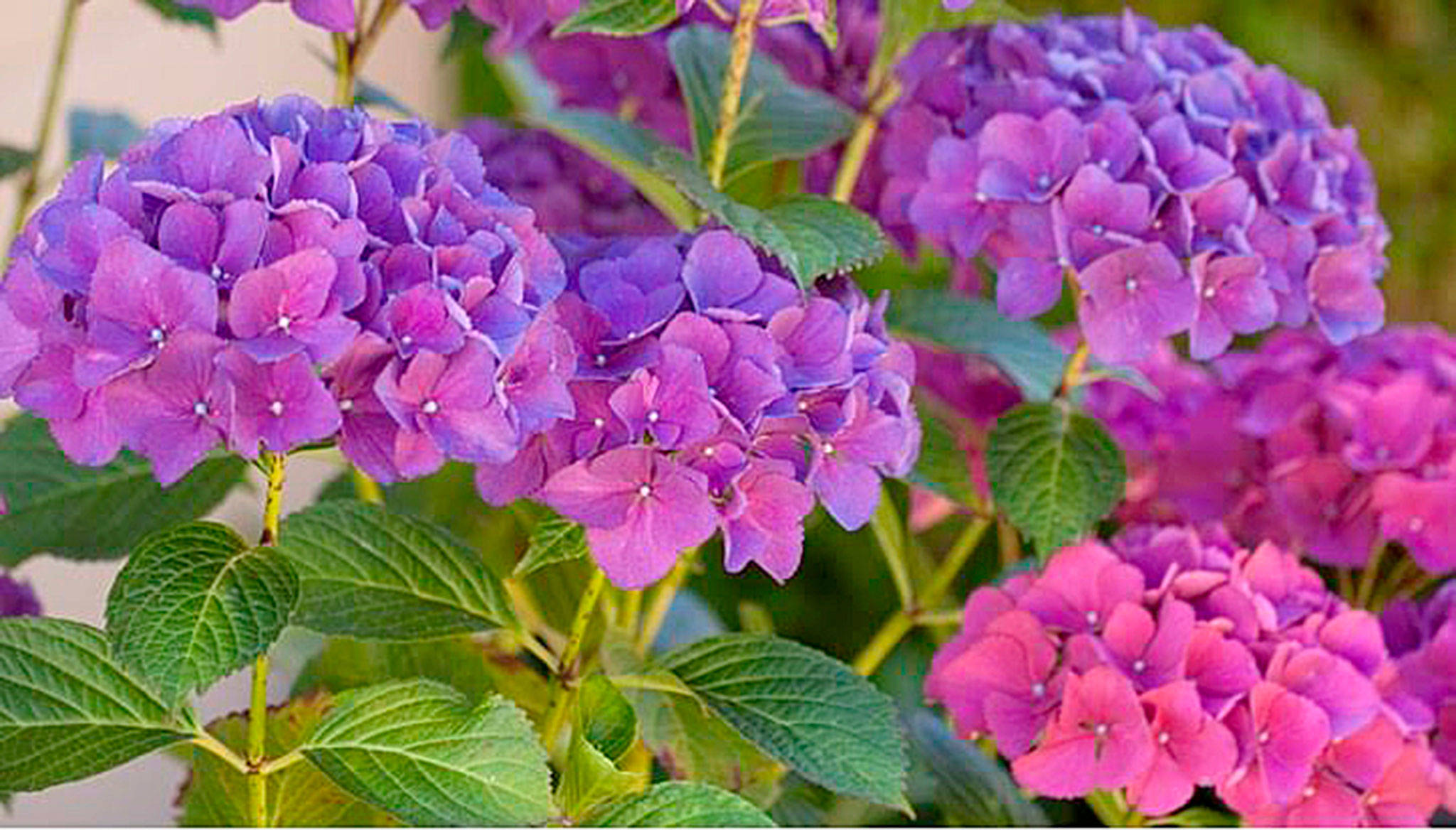to maximize plant health. Look at plant height, color and sun/shade placement in your garden.
Check with the Clallam Conservation District to have your soil tested for a small fee. This link will guide you to the information you need to collect and submit samples from your garden or flower beds. They also will help you interpret results specific to your location. If soil amendments are needed, you can implement them in preparation for the next garden cycle (see clallamcd.org/soil-testing/).
Watering
On the Olympic Peninsula, August means heightened vigilance for water and moisture in gardens. If you are planning vacation, be sure to enlist friends or neighbors to do watering or use timers. In the interest of water conservation, be sure any irrigation systems are in good repair. Overwatering can damage root structure.
Transplants and new plantings need careful monitoring to establish properly. For containers and hanging baskets, frequent watering is required but may cause loss of nutrients. Consider fertilizing biweekly. Allow soil surface to dry before watering again.
Vegetables, berries
Vegetables — Harvest is starting for tomatoes, beans and summer squash. Tomatoes need constant, moderate watering, letting soil dry between watering. Sun and air circulation between your plants reduce opportunities for mildew on leaves. Compost or till under spent crops as they occur. Onions need a dry place to cure for about two weeks before storing.
In early August new seed plantings of lettuce, scallions, peas, radishes or spinach may be planted directly into the soil. Spinach seeds may benefit from refrigeration for a week prior to planting. If planting from seed, plant deeper than in spring to adjust for lower moisture levels. Mulch to keep soil moist and protect from early frost.
To facilitate establishing plants taking longer to mature, transplant seedlings for cauliflower, broccoli, beets, cabbage, kohlrabi and kale.
Berries — Eat as many fresh berries as you can. Cover any leftover berries with netting to protect from birds. Mulching will help maintain moisture and keep soil temperature warm, when the cooler evenings of fall watering promotes plant health by keeping leaves dry and roots nourished.
Ornamentals
Annuals — This is their season! Deadheading spent blossoms will encourage continuous blooming into fall.
Perennials — Perennials flourish in August weather if they have adequate moisture. Remove spent flowers to encourage blooming through fall. Thin and divide crowded and overgrown tubers, rhizomes and corms. Irises should be divided every 3-4 years. Divide and replant day lilies. For tubers, rhizomes and corms, cut out parts damaged by boring insects. Replant at surface level. Tops should be visible. Water transplants thoroughly.
Trees, shrubs
Gently shape and remove dead branches on small trees and shrubs. Over-pruning will encourage new growth late in the season. For fruit trees, remove water shoots, the vertical shoots on apple trees that will not produce fruit in the future. Pruning cherry and plum trees during late summertime can reduce diseases by removing affected branches and leaves. Delay planting new trees until cooler fall weather.
Roses will continue to bloom into the fall if spent blossoms are removed. Stop fertilizing roses and woody shrubs by mid-August so they will harden off before cooler weather. Prune and shape hedges. Any new growth will be able to harden before winter temperatures.
Lawn
In general, water lawns deeply, once a week. An inch a week usually is sufficient. Over-watering negatively affects root systems. Mulching retains moisture. The alternative is to letting the lawn go dormant, perhaps watering only once a month at most. That is the natural life cycle for lawn in arid summers.
Watering is a challenge for lawn maintenance in August. To preserve moisture, mow about 4 inches high. Wait until fall to fertilize. Thatch and aerate to promote root growth. Delay new lawn planting until cooler fall weather.
Finally …
Enjoy your garden. Think about preserving or donating edibles you cannot consume. Drying your hydrangeas and tall grasses will bring the outdoors into your home in winter months.


